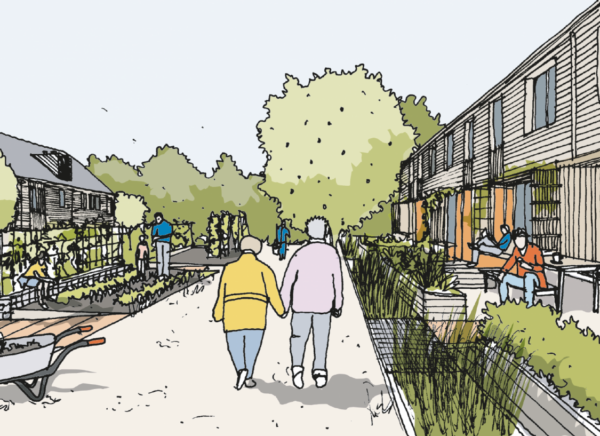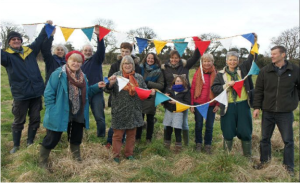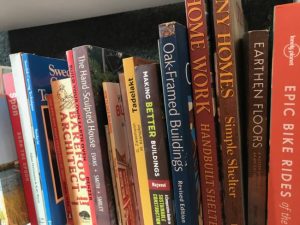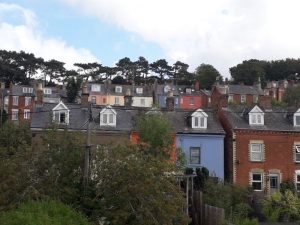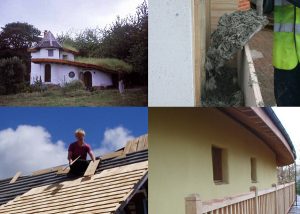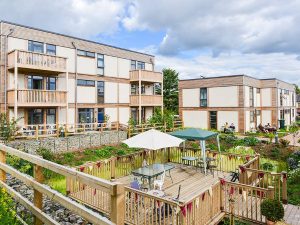Bridport Cohousing in Dorset has moved on a pace since we were last in touch. Nearly all of our affordable eco houses now have residents, there are children playing on the car-free streets and we have planted up our community orchard and are harvesting a mountain of courgettes in our communal growing beds!
The 1 bedroom flats will be the last homes to be occupied and we are hoping that the builders are off site at the beginning of September.
Building a Common House was always going to prove difficult for this community of low income families and retired people. We can’t afford to ‘chip in’ to cover costs and there is no grant funding for a non residential building which does not have open access to the public. Building costs have almost doubled in the past few years and members didn’t want to saddle themselves with debt for years to come – we had to think outside the box.
Bridport Cohousing: thinking differently
A conversation with some designers and natural building experts locally created a radical approach to the problem and we are now, very suddenly realising that this is our one time opportunity to finishing of our project at Hazelmead – the biggest cohousing development in the UK, with the largest community microgrid (to date) on site and the first cohousing / CLT scheme in the country, and in partnership with a housing association.
Common house build courses

The idea is to run 4 courses over the summer/ autumn in natural building using locally sourced and some recycled materials. These should prove extremely popular as we have Barbara Jones leading the courses. She is the UK guru of straw bale building and co-founder of the School of Natural Building. The courses are on offer as of today and will be open to anyone with an interest in sustainable building methods, and also some members of Bridport Cohousing. Find out more here.
Phase 1 this summer will create our multifunctional hall, toilets and kitchen. Next year we will extend the building ourselves to create an additional office, therapy room and meeting room.
What we are hoping to do is raise a lot of publicity around this and create a template for others to follow and build their own structures – even their own homes. There is a lot of H&S regulation and other red tape surrounding construction, and by carefully monitoring and analysis of the risk associated with this different approach we hope to address each of the technical barriers to its adoption . It is understood the main barriers to adoption are that working with volunteers and non-professionals in construction has a higher risk for health and safety, the timely delivery of a project and cost management. The review will produce a set of processes and technical guides that better manage the risks associated with the locally sourced self managed build process.
The Phase 1 & 2 build will be externally reviewed by an independent institute to assess the benefits and potential for wider adoption of the approach trialled in the building of the Common House. This would then be disseminated via the many community and social housing networks.

